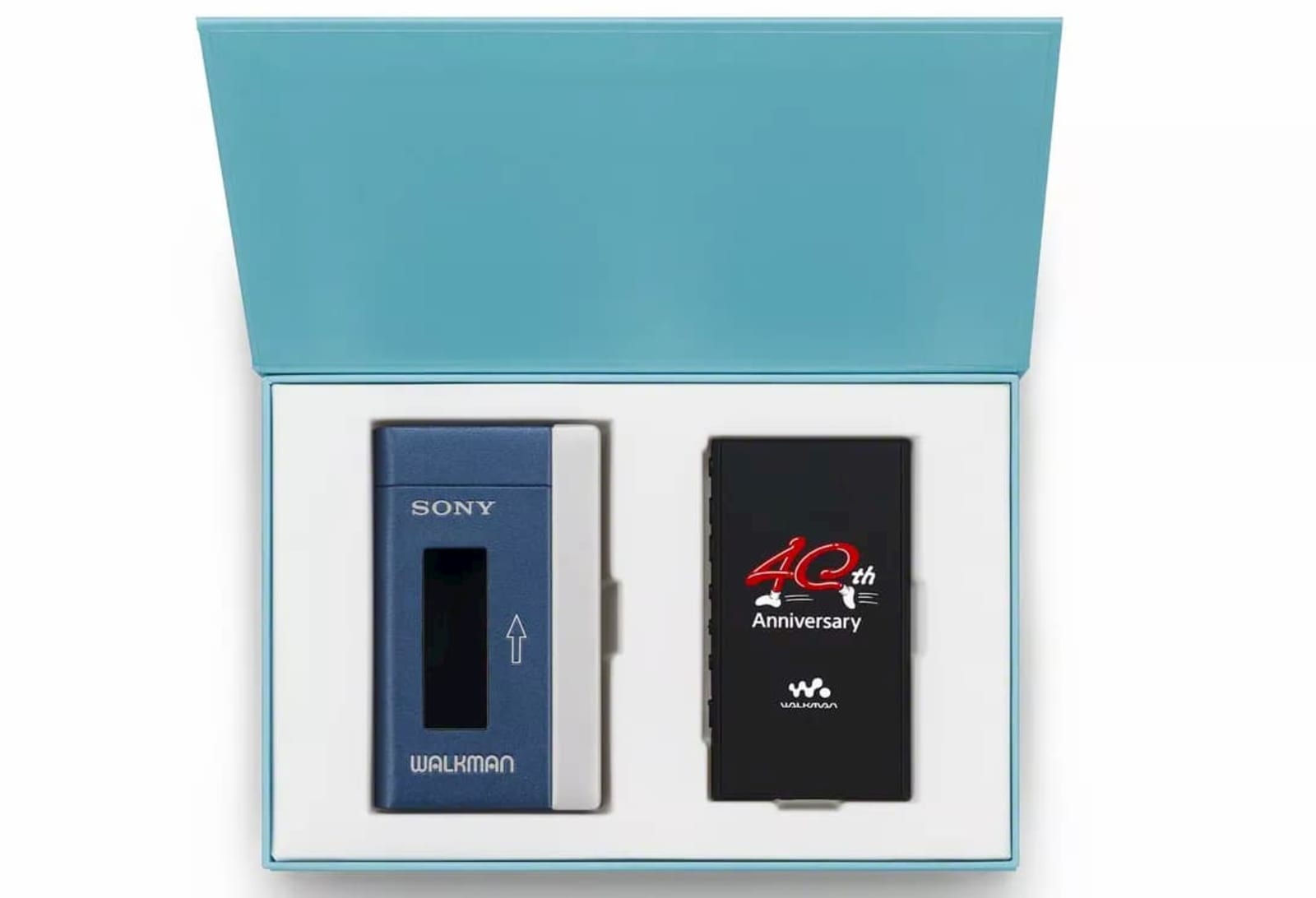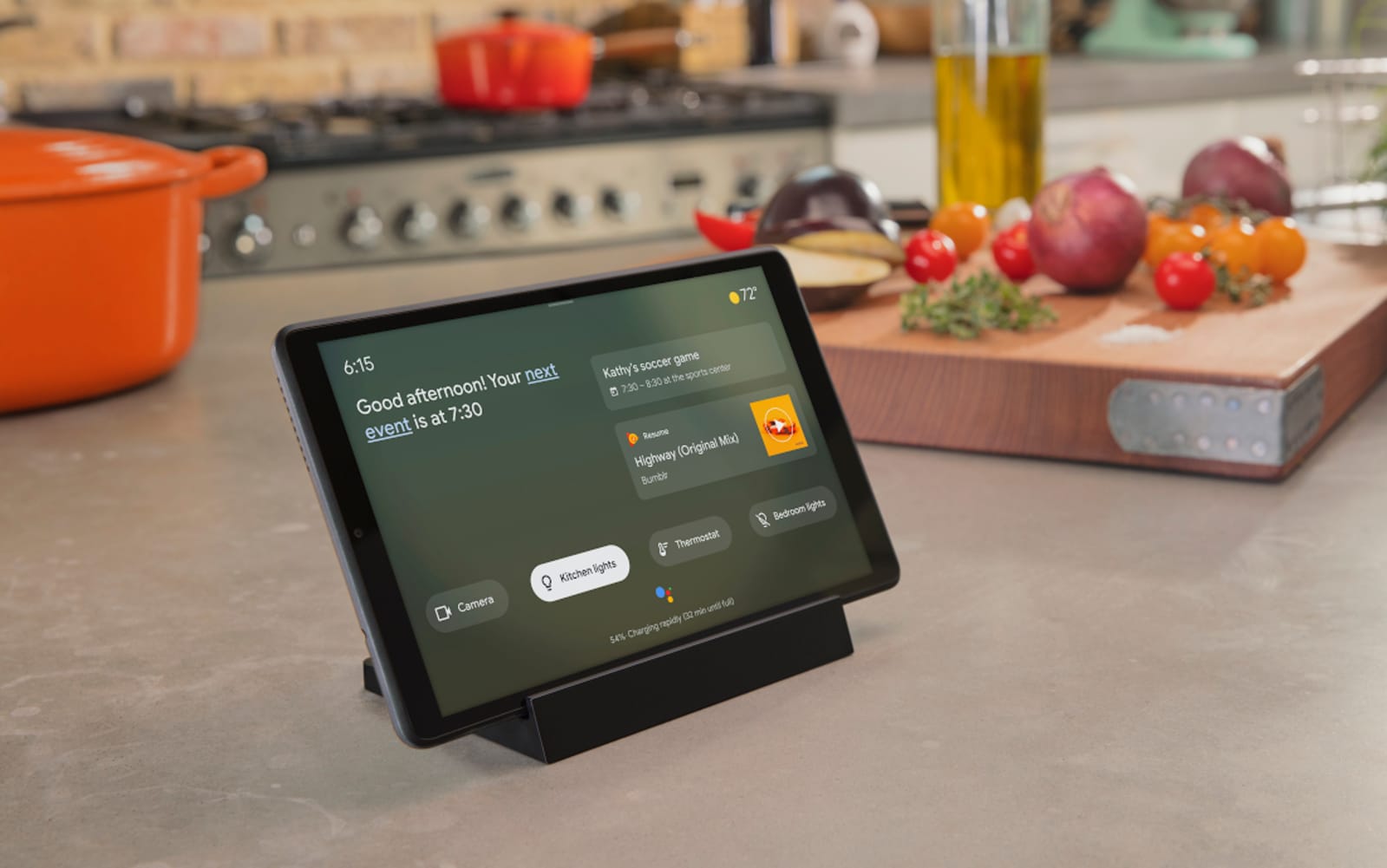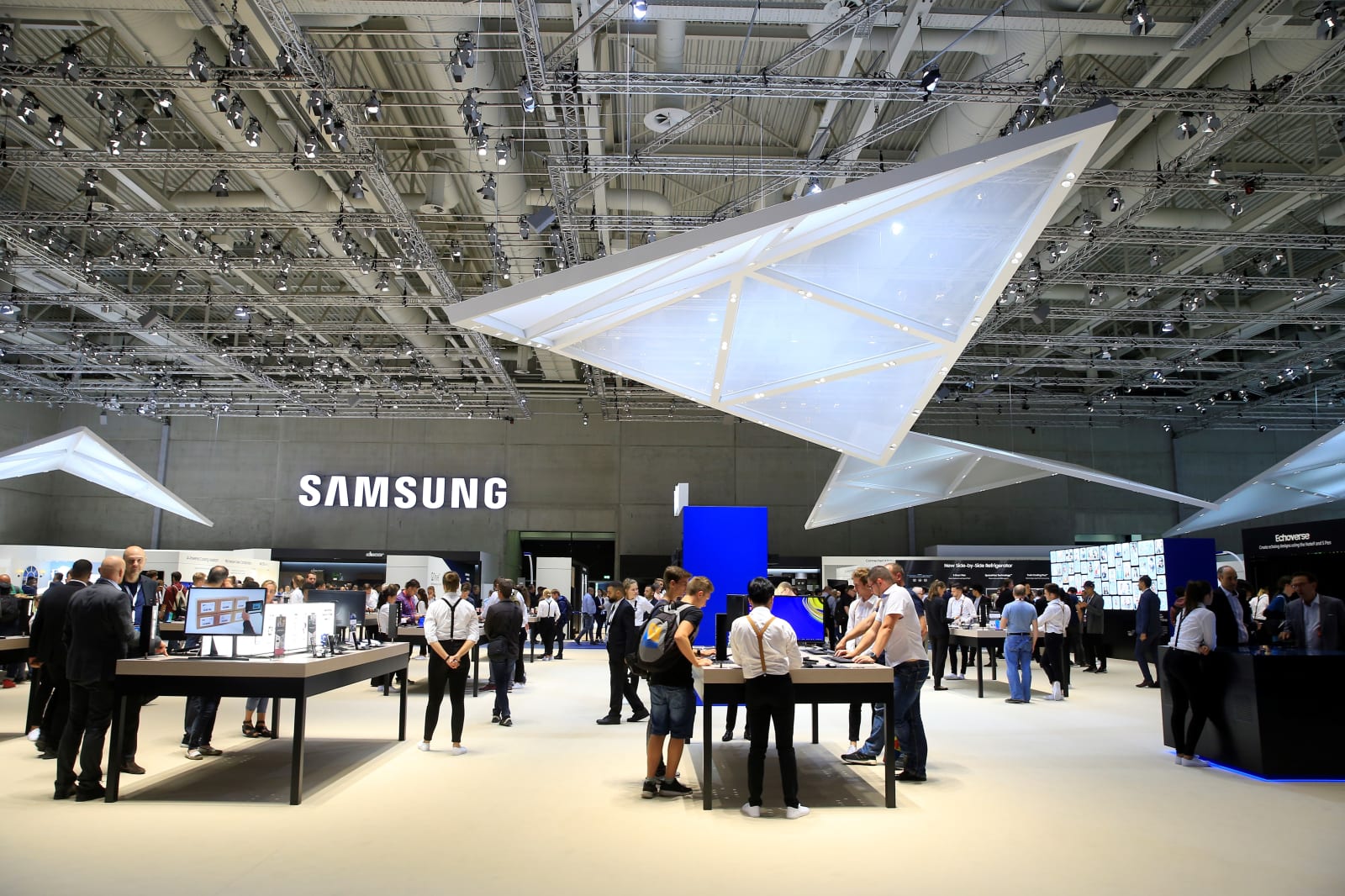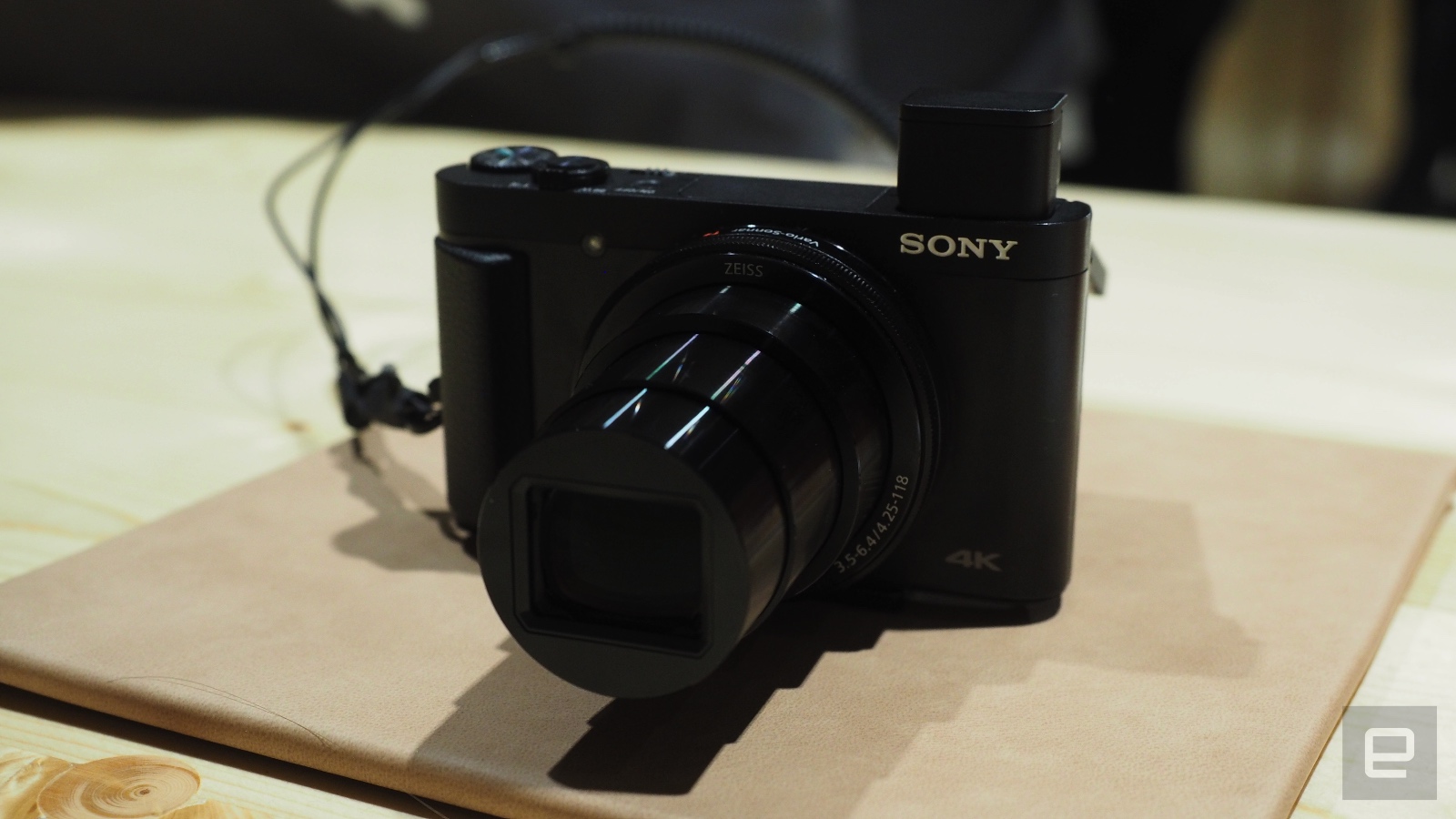Tag Archives: IFA
Sony’s 40th anniversary Walkman is a cassette-free nostalgia fail
 Even though it's a long time since cassettes have truly been in vogue, it's still disappointing Sony's 40th anniversary Walkman doesn't let you play music from magnetic tape. If you do pick up the NW-A100TPS, you'll have to make do with a cassette ta...
Even though it's a long time since cassettes have truly been in vogue, it's still disappointing Sony's 40th anniversary Walkman doesn't let you play music from magnetic tape. If you do pick up the NW-A100TPS, you'll have to make do with a cassette ta...
Google Assistant’s Ambient Mode turns Android devices into smart displays
 Google wants to put your device to work even when it's charging or resting on a living room table or kitchen counter. Today at IFA, the company announced Ambient Mode for Google Assistant. The new feature will turn the latest Android devices into sma...
Google wants to put your device to work even when it's charging or resting on a living room table or kitchen counter. Today at IFA, the company announced Ambient Mode for Google Assistant. The new feature will turn the latest Android devices into sma...
HMD’s Nokia 7.2 could be the new mid-range smartphone to beat
 The Nokia 7.1 was a fan-favorite, so a sequel was all but inevitable — what's more surprising is just how ambitious it is. HMD just pulled back the curtain on the Nokia 7.2 at IFA in Berlin today, and if nothing else, it's a clear sign that...
The Nokia 7.1 was a fan-favorite, so a sequel was all but inevitable — what's more surprising is just how ambitious it is. HMD just pulled back the curtain on the Nokia 7.2 at IFA in Berlin today, and if nothing else, it's a clear sign that...
Live from Samsung’s IFA 2019 press event!
 Samsung already revealed the Galaxy Note 10 a few weeks ago, but the company is still hosting a press conference here in Berlin for IFA 2019. Between then and now, the Korean giant has announced the Galaxy A90 5G, brought HDR10+ to 8K TVs and shown o...
Samsung already revealed the Galaxy Note 10 a few weeks ago, but the company is still hosting a press conference here in Berlin for IFA 2019. Between then and now, the Korean giant has announced the Galaxy A90 5G, brought HDR10+ to 8K TVs and shown o...
What to expect at IFA 2019
 There's just one big technology show before the end of the year, IFA, where we'll see the last goodies revealed before everyone goes into buying mode. As usual, a team of Engadget's finest will descend upon Berlin to uncover all of the best thing...
There's just one big technology show before the end of the year, IFA, where we'll see the last goodies revealed before everyone goes into buying mode. As usual, a team of Engadget's finest will descend upon Berlin to uncover all of the best thing...
2019 IFA Global Press Conference Previews Tech and Trends for IFA 2019 Berlin Show
Here in the states, the big electronic gadget exhibition is CES. But in Europe, its the Internationale Funkausstellung Berlin, aka IFA (pronounced “eee-fah”). Each September, the show kicks off in Berlin, Germany, showcasing a wide variety of technology in consumer electronics, personal care and health technology, home appliances, and much more. Over 244,000 people and 1,800 exhibitors attended IFA in 2018, so it’s quite an impressive event.
Several months before IFA kicks off each year, they host media from around the globe at their Global Press Conference (GPC), teasing the things we can expect from the IFA show in a few months.

I’ve spent the past several days in Andalusia, Spain at the 2019 IFA GPC, getting to know several hundred of my fellow journalists from around the globe, a number of technology vendors, and learning about industry trends.
Among the vendors on hand were Haier, who showed off some slick new home appliances, such as a 3-in-1 washer/dryer with a touchscreen interface, and the ability to wash and dry in one unit, while drying a second load at the same time. Philips turned out to talk about their personal health initiatives and their goal of improving 3 billion lives by 2030. One of the more intriguing products they talked about was their Snore Relief Band, a gadget you can wear at night that sends out subtle vibrations to make you change positions should you start to snore, improving sleep quality for you and your partner in bed.

Chinese TV makers Hisense showed off the 74U9E, an insanely sharp 75” 8K display which offers a whopping 5,376 local dimming zones for excellent contrast, and quantum dot technology for brilliant colors, and German electronics maker Metz talked about their plans to go global with their new OLED Android TVs, which are a result of their new owners, Chinese display maker, Skyworth.


Another intriguing device on display comes from a startup. The Safera Sense is a small infrared gadget you can install above your stovetop to monitor temperature and air quality. It can be used not only to tell you when the water in your pot has boiled, but can alert you if you accidentally left your stove on – which is one of the leading causes of kitchen and house fires. It can even be used to automatically switch off your stove’s power with an optional power control unit.

Last, but certainly not least, was the Ambeo 360-degree surround soundbar from German audio specialists Sennheiser. You can check out much more detail about this impressive home theater device in my first listen review here.

Among the trends presented by insights company GfK were the increasing availability of 4K UHD content, which is growing steadily across the globe, and the increasing market penetration of 4K displays. By 2022, they expect nearly 60% of North American homes to have a 4K display – and this should continue to grow the volume of content, as well as increasing bandwidth needs. And if you’re worried that 8K will be the “next big thing,” not to worry. There’s little evidence that these high-end devices will see big market penetration for quite some time.

We also spent quite some time learning about smart home trends, and while many homes already have some connected gadgets, the biggest challenge is the lack of an easy-to-use, standard ecosystem for controlling all of these devices together in one place. Technologies like Amazon’s Alexa seem to have the best shot of being the unifier for these devices. Climate control, home audio, TVs, and security systems are leading the connected home charge, while smart appliances and personal care devices are still lagging behind.

Emerging technologies expert Margot Edelman also led off a discussion about consumer trust of technology, and it was particularly interesting to note that trust in health tech, IoT, and artificial intelligence technologies are quite high compared to things like blockchain tech and autonomous vehicles. Unsurprisingly, social media is one of the least trusted forms of technology and media.
We can expect these trends to drive the technology on display at IFA 2019 in September and beyond. Unlike other consumer electronics shows, IFA is open to the public – so you can check it out for yourself between September 6-11, 2019 in Berlin. Beyond the main tech exhibits, keynote speakers include Huawei CEO Richard Yu, and Qualcomm President Cristiano Amon. In addition, and the IFA+ Summit will be discussing “Dataism” – the importance of data to our world and society. The IFA Next exhibit showcases innovation from startups, and includes Shift Automotive – a 2-day event especially of interest to me – focused on the future of mobility, and automotive technology.

You can find more information about IFA’s various programs and the IFA Berlin show on the IFA website.
Sennheiser Ambeo Soundbar First Listen Review
These days, everyone has a big flat-panel television somewhere in their house. While the internal speakers on TVs have improved quite a bit in recent years, the sound quality is never what I’d call “cinematic.” For true home theater sound, you need either a multispeaker surround sound setup, or one of the various soundbars on the market. If you want a single device that can truly fill a room with sound, you’ll definitely want to check out the new Sennheiser Ambeo soundbar.
I recently had the chance to go ears-on with the new Ambeo at the IFA Global Press Conference in Andalusia, Spain, and was extremely impressed with its ability to produce compelling, room-filling surround sound from a single box.
Over the years, I’ve owned and listened to a variety of soundbars, and many have claimed to produce surround without external speakers or wires. And with maybe one exception – Yamaha’s YSP series of speakers – they’ve all failed to deliver. That changes with Sennheiser’s Ambeo.

Housing 13 individual speaker drivers, each powered by a discrete class-D amp (500 watts in total), the Ambeo cranks out tremendous volume with crystal clarity. It uses a combination of acoustic wave guides, speaker placement, and digital processing to reflect sound waves off of the walls and ceiling of your room, creating a tremendous sense of space. The left to right soundstage is truly impressive – delivering sounds that appear to come from substantially further out than the 49 inch-wide soundbar itself. Thanks to a pair of top-mounted full-range drivers, it also manages to create a great sense of height, taking full advantage of the 360-degree capabilities of Dolby Atmos-encoded recordings. It’s also compatible with DTS:X content.


I found the rear surround effects to lose a little depth compared to the side surround, but the psychoacoustic effects did give me the sense that sounds were wrapping around my head. Also, there were people standing behind me at the time of my listening session, so that may have had an impact on rear channel reflections. One great thing about the Ambeo is that it comes with a specialized microphone which sits at ear-level to automatically calibrate its sound to your room, and can compensate for things like off-center placement, or oddly shaped rooms. That said, it’s optimal for use in a square or rectangular room with four walls, and placed at the front of the room, and no more than 5 meters (13 feet) from the soundbar to your walls and ceiling.

Thanks to its six enclosed 4” woofer modules, the Ambeo offers up surprisingly rich bass down to 30Hz, meaning that you can operate the Ambeo soundbar without an external subwoofer should you so choose. If you want your walls to rumble, you can add on an external amplified subwoofer of your choice via the Ambeo’s RCA output, and send low frequencies from 80Hz down to the sub. Keep in mind that to achieve its great low-end performance, the Ambeo is quite a bit deeper than most typical sound bars, measuring in at 6.69” deep. If you place it on a stand, you’ll want to make sure you have room in front of your television for it – otherwise, you’ll want to opt for the wall-mount kit.

For connecting devices, the Ambeo soundbar has four HDMI inputs with support for HDMI 2.1, as well as ARC if you want to run your video switching through your TV instead. You can also stream audio using Chromecast or Bluetooth, which is great, because the Ambeo does a great job playing back music too. You can listen to audio recordings with their original stereo imaging, or expand them to surround using the soundbar’s digital sound processing algorithms. I didn’t get a chance to listen to this effect, but a classical music track recorded in Atmos sounded quite spectacular. You can also customize the speaker’s equalization and surround settings via a companion smartphone app.

In my brief listening experience with the Ambeo soundbar, I found it to live up to its promises in terms of excellent sound quality, surround imaging, and an incredibly large soundstage from a single device with no external speakers. The Sennheiser Ambeo soundbar will hit retailers in Europe on May 31, 2019, and North America around mid June. It will retail for €2499 Euro / $2499 US Dollars. If you happen to be attending the IFA show in Berlin this September, you can listen to it in person there as well.

The biggest news from IFA 2018
 We're wrapping up our coverage of IFA 2018, and things just seemed... quieter in comparison to last year. There were next to no new wearable announcements, plenty of mid-range phones, but only one premium smartphone. Meanwhile, PCs followed the...
We're wrapping up our coverage of IFA 2018, and things just seemed... quieter in comparison to last year. There were next to no new wearable announcements, plenty of mid-range phones, but only one premium smartphone. Meanwhile, PCs followed the...
Sony’s new HX99 compact camera does things your smartphone can’t
 At a time when everyone is carrying around a generally capable camera inside their smartphone, compact cameras have struggled to stay relevant. Barring Sony's own wonderful RX100 series and Fujifilm's X100F family, the world of point-and-shoots is us...
At a time when everyone is carrying around a generally capable camera inside their smartphone, compact cameras have struggled to stay relevant. Barring Sony's own wonderful RX100 series and Fujifilm's X100F family, the world of point-and-shoots is us...